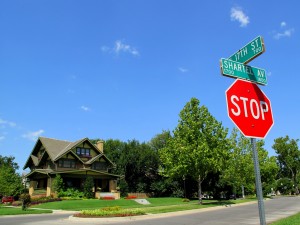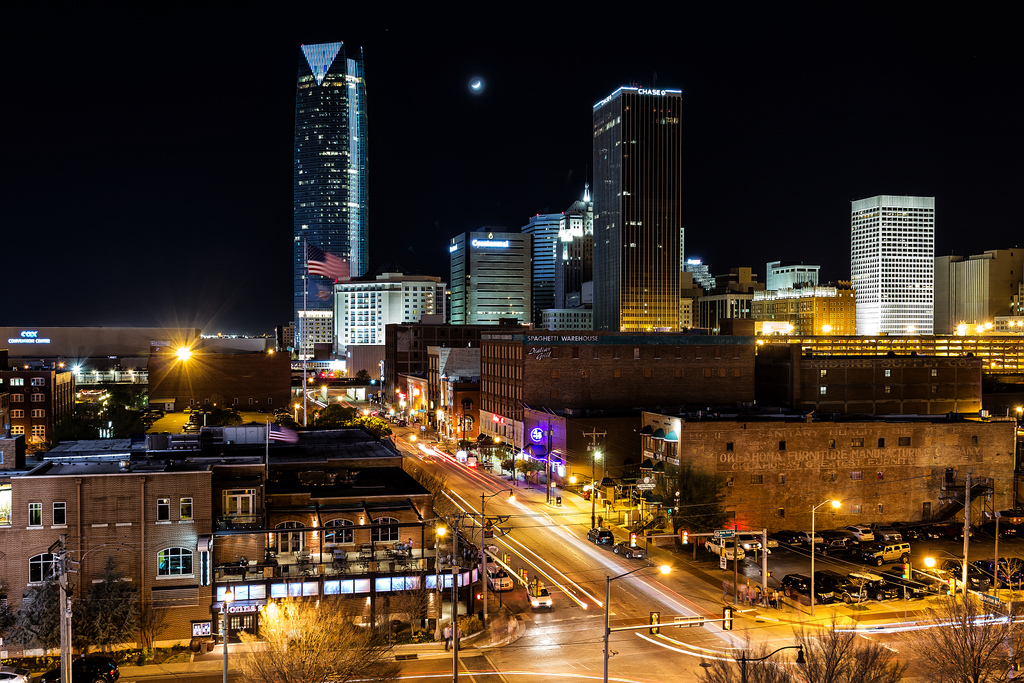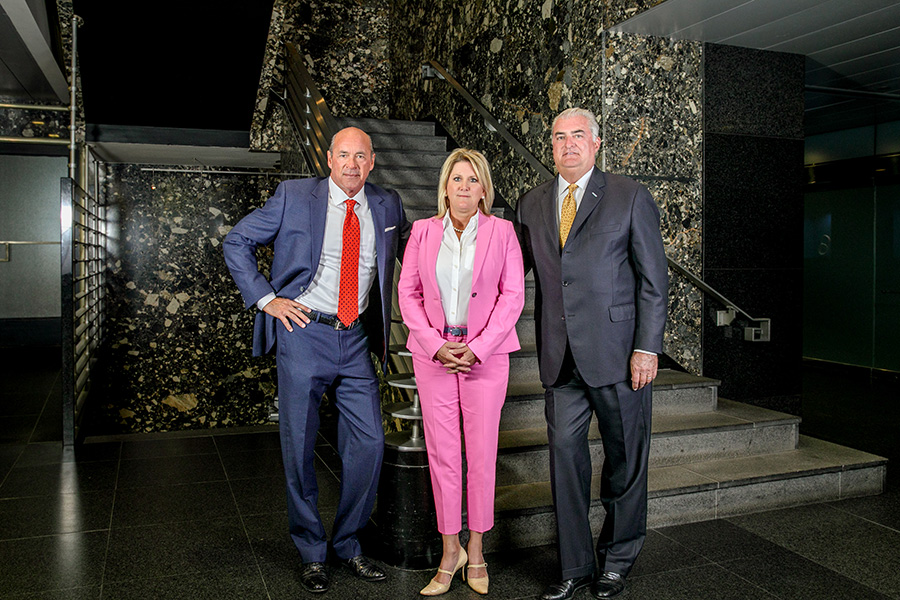Oklahoma City Letting Feet Do the Walking
For years, Oklahoma City was considered primarily a driving city, as its residents biked, walked and used mass transit less than the national average.
But a renaissance has taken hold in Oklahoma City in recent years as civic and community leaders began transforming the downtown and surrounding neighborhoods into places where people want to live, work and play. By doing so, they have created a more livable city with more pedestrian-friendly neighborhoods.
“People are starting to understand that walking isn’t just for exercise any more,” said Jill Delozier, marketing director of Downtown OKC, a nonprofit organization. “It’s another form of transportation.”
Downtown OKC, Inc., is focused on improving the experience of living, working and visiting the inner part of the city. Mini-parks, chalk walls, murals, beautification projects and, most recently, a citywide sidewalk construction project, are helping make the city more walkable, Delozier said. The sidewalks improve access to schools, shopping, public transit and parks.
“It’s a really neat movement we’re seeing finally take off in Oklahoma City,” she said.
Plans are proceeding for a $132 million downtown park consisting of 40 acres north of I-40 and 30 acres between I-40 and the river, linked by the SkyDance pedestrian bridge.
Not only does walking lead to healthier lives, it cuts family commuting expenses and improves a community’s prospects for economic development by attracting corporations and young entrepreneurs who are interested in “street life,” according to the study.
What are the most walkable areas of Oklahoma City? According to an imaginativeamerica.com blog, some of the most pedestrian-friendly neighborhoods are:
 Mesta Park/Heritage Hills/Winans between NW 13th Street and 23rd Street and between Classen Boulevard and Robinson: Neighborhoods are walkable there, and Midtown across 13th Street offers an increasing selection of restaurants and bars, while a Homeland grocery store is located at Western and 18th Street.
Mesta Park/Heritage Hills/Winans between NW 13th Street and 23rd Street and between Classen Boulevard and Robinson: Neighborhoods are walkable there, and Midtown across 13th Street offers an increasing selection of restaurants and bars, while a Homeland grocery store is located at Western and 18th Street.- Jefferson Park/The Paseo/Sparrow Park north of 23rd Street: The Paseo offers restaurants and galleries while 23rd boasts restaurants and retailers that make for a walkable lifestyle. Smaller homes also mean better values and great potential, it notes.
- Midtown is loaded with energy and new restaurants such as McNellie’s Irish Pub and Irma’s Burgers, and the area holds “great potential” but has “gaps in the fabric” and there probably aren’t enough residents to call it a neighborhood.
- Crown Heights is considered a “wonderful” neighborhood close to the Western restaurant area with numerous dining and bar options, though it has no sidewalks.
- Downtown/Bricktown/The Triangle. Downtown offers the OKC Museum of Art, CivicCenter Performance Center, Downtown Library, Ford Center Arena, but almost all housing units are attached to a parking spot. Bricktown has the widest array of services, but doesn’t offer as many living options.
A study by Speck & Associates focuses on making walking safer, more comfortable and interesting by giving pedestrians something to look at as they walk, such as retail storefronts. The study also suggests hiding large parking lots in favor of on-street parking, limiting left-hand turning lanes and making streets narrower, in addition to planting more trees.
Extra Benefit of Walkable Neighborhoods: DUI Reduction
A pedestrian lifestyle, along with better use of mass transit, taxis and real-time transportation such as UberX could lead to safer streets by reducing drunk driving accidents, according to a citylab.com article.
DUI laws through the efforts of Mothers Against Drunk Driving have cut drunk-driving deaths in half – from more than 20,000 to 10,000 – since 1980, the article reports.
It stands to reason that people who adopt a pedestrian lifestyle are much less likely to get behind the wheel drunk and get involved in car accidents when you can simply walk home from your favorite bar or restaurant without endangering others.
Once ranked dead last for walkability in a study of 500 American cities, Oklahoma City is reshaping its core by making its neighborhoods and business district more inviting for pedestrians.
By continuing to emphasize walkability in Oklahoma City, leaders can improve tourism and economic development while rebuilding core neighborhoods and making the entire city a safer place for pedestrians and motorists.
Blog CATEGORIES
Let's Talk About It
Speak with an experienced attorney at no cost to you


